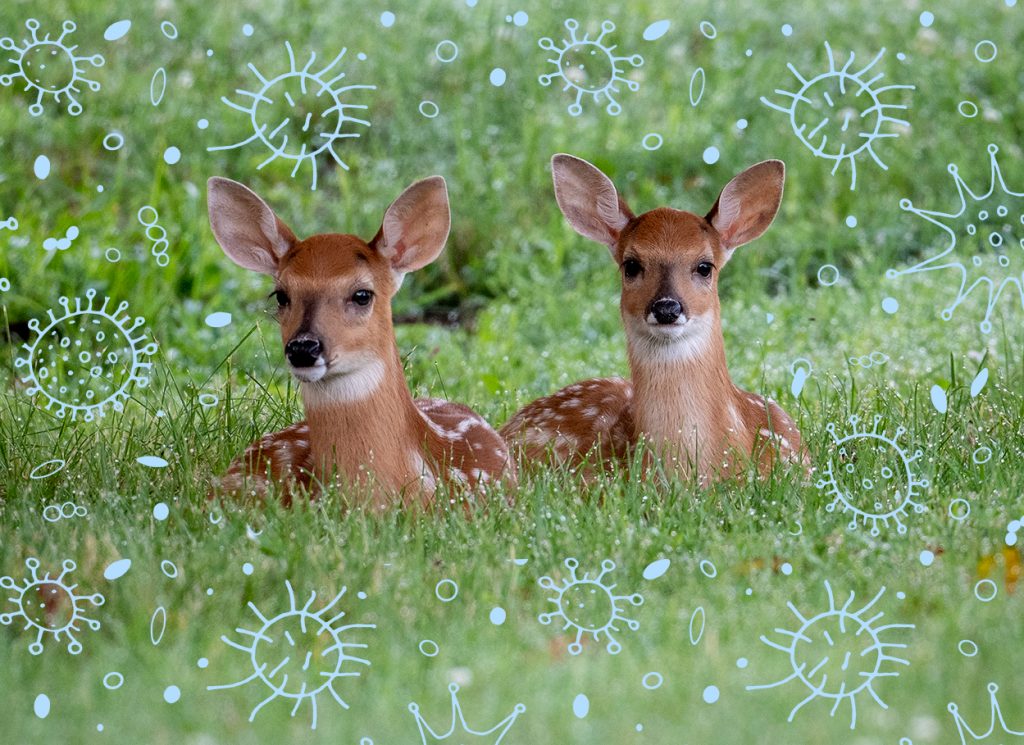Whitetails can catch COVID-19 virus and give it to other deer, study says

A new study by Texas A&M’s College of Veterinary Medicine & Biomedical Sciences has revealed that captive white-tailed deer in Texas are susceptible to SARS-CoV-2, the virus that causes COVID-19. With more than 90 percent of the captive deer at one facility testing positive for the virus, the authors indicate their findings likely reflect deer-to-deer transmission.
The research team, led by Associate Professor Sarah Hamer, has been investigating how animals are involved in the transmission of SARS-CoV-2 since early days of the pandemic in summer 2020. Their initial work detailed infections in about a quarter of the dogs and cats that lived in households with infected owners in Central Texas and led to questions about other animals that interact with humans.
Additionally, work conducted last year by the U.S. Department of Agriculture’s Animal and Plant Health Inspection Service, APHIS, showed free-ranging white-tailed deer populations across Illinois, Michigan, New York and Pennsylvania had produced SARS-CoV-2 antibodies, which indicated they had been exposed to COVID.
The research team then developed collaborations for a study on captive white-tail deer in Texas, focused on animal health and the potential for viral transmission from infected animals to other animals.
Hamer, principal investigator for the new study, said since free-ranging white-tailed deer with evidence of SARS-CoV-2 infection have been found in several states, now including Texas, it was important to understand how the risk to captive deer may be similar or different.
“These studies open our eyes to a less ‘human-centric’ perspective on COVID transmission and to the need to investigate potential animal reservoirs for the disease,” she said.
White-tailed deer have been shown to be susceptible to SARS-CoV-2 because their ACE2, or angiotensin converting enzyme 2, which is where the virus attaches, is very similar to that of humans, said Terry Hensley, assistant agency director for diagnostic services with the Texas A&M Veterinary Medical Diagnostic Laboratory (TVMDL), Bryan-College Station.
“However, while the white-tailed deer in the USDA study were able to be infected with SARS- CoV-2, then shed the virus and infect other deer in the study, they did not develop any observable clinical illness from the virus,” he said. “We still have a lot to learn concerning SARS-CoV-2 and wildlife.”
The Texas A&M study, which involved graduate student, postdoctoral, faculty and veterinarian researchers, involved the use of plaque reduction neutralization assays to test for SARS-CoV-2 antibodies in 80 deer at three captive cervid facilities in Central and South Texas, and additional work is ongoing.
Samples were tested in a TVMDL Biosafety Level 3 laboratory.
“The level of infection we detected, which was more than 90 percent of the tested captive deer at one facility, cannot be explained by human contact alone,” said Hamer, who also oversees a research laboratory focused on the ecology, evolution and epidemiology of vector-borne wildlife and zoonotic diseases using field-based studies and molecular tools.
“Only a subset of the deer that tested seropositive had close or direct contact with humans,” she explained. “While there may have been some initial human-to-deer transmission of the virus, the vast majority of transmission at that facility appears to have been from deer to deer.”
Hamer also noted the prevalence of COVID-positive deer in the one Texas facility was more than double the amount reported in recent studies of wild deer populations in Texas and some northern states.

